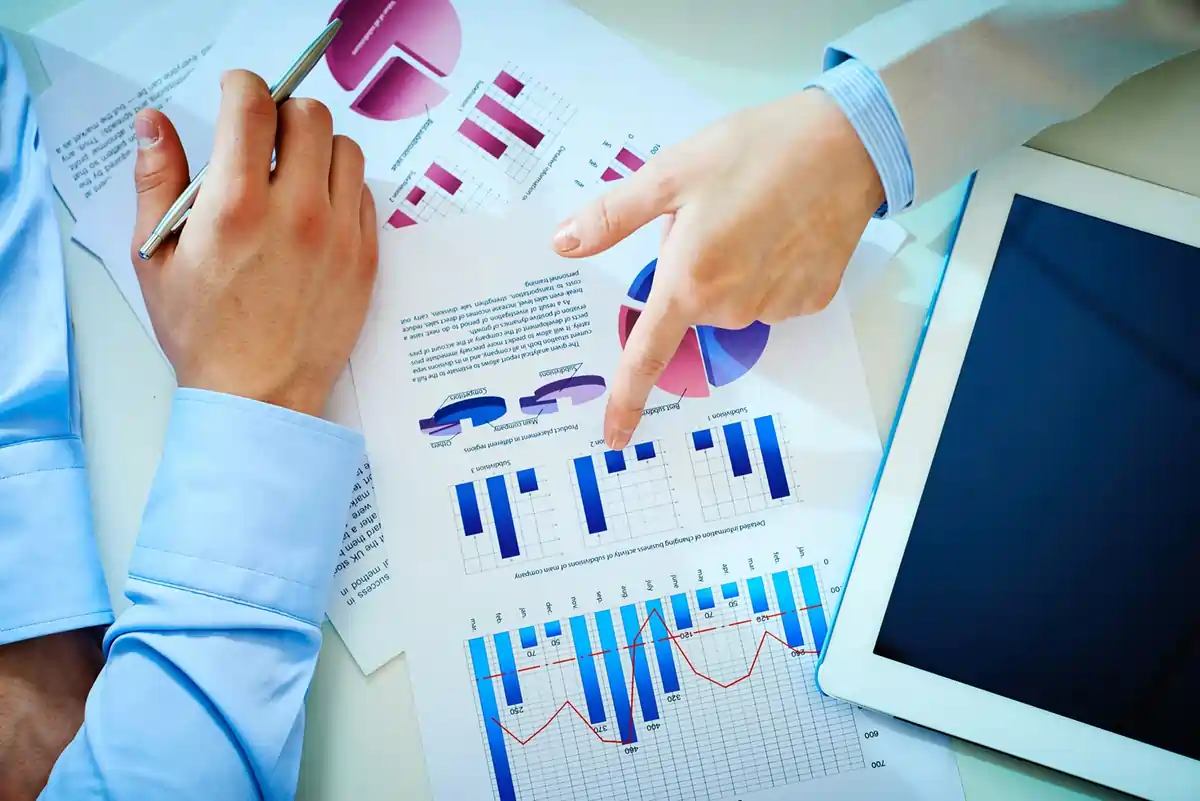
Unlock The Power of Data: R Language Code for Efficient Analysis
In today’s data-driven world, are you ready to fully leverage the power of R language code for data analysis? Learning R language code is essential for practical and helpful analysis, regardless of experience level with data science. The capacity to use R language code to modify, visualize, and interpret significant information has revolutionized the way professionals approach data analysis. The R language’s vast package library and adaptable features enable users to handle various analytical problems quickly and accurately. This essay explores the hidden powers of R language code and how using it can improve your ability to analyze data. Get ready to discover increased efficiency and more profound understanding as we go into R language-driven analysis.
Introduction: The Importance of Data Analysis
In the current corporate landscape, data analysis has become an essential resource for organizations, moving beyond merely a helpful tool. Businesses increasingly recognize the advantages of uncovering valuable insights from the growing abundance of daily data. In this context, the R language code proves useful due to its dependable and adaptable platform for statistical analysis and visualization. By utilizing R language code, businesses can delve deeper into various subjects such as operations, consumer behavior, market trends, and more to gain profound insights.
The importance of data analysis is not limited to corporate domains; it also encompasses diverse disciplines, including healthcare, education, and research. Analyzing patient data, for example, can be used to spot trends and forecast possible health effects in the healthcare industry. Similarly, reliable data analysis techniques in academic research can confirm conclusions and offer insightful support for scholarly writing. The importance of competent data analysis cannot be emphasized, as it can reveal hidden patterns and guide crucial decision-making processes.
Understanding R Language Code: Basics and Benefits
A flexible and potent tool for statistical modeling and data analysis is the R language. Its extensive package collection, simplifying difficult jobs, is one of its main advantages. Users will have no trouble finding solutions for various tasks including data display and manipulation , because an active community always creates new packages. R is a flexible programming language perfect for data scientists and analysts, regardless of whether they are working with machine learning techniques or producing interactive infographics.
Furthermore, the clarity of the R language code significantly improves teamwork. Teams can work together on projects thanks to its expressive and intuitive syntax, which keeps developers from becoming bogged down in complex code.
Why Choose R Language for Data Analysis?
Open source: R is a computer language that is freely accessible to all users for use and modification. This facilitates collaboration and creativity while making it available to a broad spectrum of consumers.
Large library: R has an abundance of packages and libraries covering a broad spectrum of graphical and statistical approaches. With the help of these libraries, users may quickly and easily perform intricate analyses and produce eye-catching visualizations.
Integration: R is a useful complement to any data analysis workflow since it can easily integrate with other computer languages and tools. To take advantage of each language’s advantages, it may be integrated with Python, SQL, and other languages with ease.
Reproducibility: Because R code is so highly repeatable, sharing and replicating analyses by analysts is a breeze.
Data Manipulation in R Language Code: Techniques and Examples
R data manipulation is essential for any analyst or data scientist. Using dplyr, a package that offers a syntax of data manipulation, is one of the strongest methods. You can quickly and easily handle complicated operations and efficiently manipulate datasets using functions like filter(), select(), and mutate(). This makes it a vital feature in the R language since it enables simplified, reproducible, and readable code. Managing missing data is a crucial component of data manipulation in R. While activities like complete, the na. omit() function makes it simple to remove NA values from your collection. Cases() gives you freedom when determining the total number of cases in your data. You can preserve the caliber of your findings while guaranteeing the integrity of your study by understanding and applying these techniques. A part from these methods, rearranging data with programs like Tidyr can also be quite effective. It is simpler to convert unorganized datasets into a neat format that is appropriate for analysis and visualization when methods like gathering and spreading are used. This expedites the procedure and guarantees that your data is accessible and organized throughout your workflow, which is unquestionably advantageous when handling big or complicated datasets in R.
Statistical Analysis with R Language Code: Tools and Functions
With the use of R’s extensive toolkit and functions for statistical analysis, researchers and data analysts may extract valuable insights from large, complicated datasets. A vast collection of functions for methodically and effectively analyzing data may be found in R language code, ranging from complex prediction modeling to straightforward descriptive statistics. Users can carry out a variety of statistical studies with R’s versatility, such as clustering, regression analysis, time series forecasting, and hypothesis testing. The large library of R packages created especially for statistical analysis is one of the language’s most notable features. These packages include a wide range of functions designed for many fields, including social sciences, biostatistics, and finance. Through the use of these specific tools, researchers are able to precisely extract useful information from their datasets and handle unique difficulties.
Additionally, the vibrant R community consistently creates new packages and improves those that already exist, guaranteeing that users may use state-of-the-art techniques for their statistical analysis. R has developed to combine strong frameworks like TensorFlow and H2O for advanced analytics with the rise of big data and machine learning. Customers can use these frameworks in the comfortable RStudio environment with ease thanks to this connection. Because of R’s adaptability and reproducibility, statisticians and data scientists may take advantage of complex algorithms for tasks like anomaly detection and deep learning.
Data Visualization in R Language
Creating Informative Plots R’s data visualization toolkit is an effective means of producing visually striking and educational charts that aid in the communication of intricate data insights. Data scientists and analysts may create a wide range of visualizations, from straightforward scatter plots to complex heat maps, thanks to the flexibility of R language code. With the use of several tools like ggplot2, plotly, and d3js, users can alter their plots to highlight particular patterns or trends in their datasets.
The ggplot2 package, for instance, provides a flexible and intuitive framework for creating high-quality visualizations.
Here’s an example of how the ggplot2 package can be used to create a scatter plot:
# Load the ggplot2 package
library(ggplot2)
# Create a scatter plot
ggplot(data, aes(x = variable1, y = variable2)) +
geom_point()Using packages like Plotly, one new perspective on data visualization in R is the ability to add interactive elements to toplots. Because users may zoom in on certain areas of interest or hover over points on a graph to reveal more information, this makes for a more engaging user experience. An additional viewpoint is the significance of choosing colors carefully while making educational R plots. Data visualizations can successfully communicate patterns and contrasts without overpowering the viewer by selecting a suitable color scheme. The impact and clarity of the data that is provided are improved by this attention to detail.
Frequently Asked Questions (FAQs)
Q: What is R language?
A: A computer language and software environment for statistical analysis is called R. analysis, data manipulation, and visualization.
Q: Is R language suitable for data analysis?
A: Because of its strong visualization capabilities and extensive statistical toolkit, R is a popular choice for data analysis.
Q: Is it possible to utilize R language for machine learning?
A: Absolutely; R has numerous packages and libraries dedicated to machine learning tasks.
Q: How can I learn the R language?
A: You can start by exploring online tutorials, courses, and documentation available for R language.
Q: Does R language support extensive data analysis?
A: Yes, there are R packages that support analyzing big datasets.
Q: Are there communities or forums where I can seek help with R programming?
A: There are active communities and forums dedicated to discussing R programming and assisting.
Q: Can I integrate R code with other programming languages or tools?
A: You can easily integrate R with other programming languages and tools, such as Python or SQL.
Q: Is R language open-source?
A: Indeed, the global developer community maintains R as an open-source project.
Conclusion: Harnessing the Full Potential of Data
In conclusion, R language code allows for the true use of data’s potential. Analysts may now modify and visualize data in previously unthinkable ways thanks to this potent tool. The R language’s vast libraries and packages enable sophisticated statistical analysis and machine learning, opening the door to ground-breaking findings and foresightful insights.
Adopting the R language also encourages an innovative and collaborative culture within companies. Teams can effectively collaborate to extract significant patterns and trends from large datasets by utilizing its capabilities. This enhances decision-making procedures and gives companies the ability to adapt to a market that is changing swiftly. To fully utilize the R language and data, one must not only take advantage of technological advancements but also cultivate an attitude that encourages trial and error, innovation, and experimentation in order to discover the true worth of data assets.

Written By
Hafiz Muhammad Habib Ullah



